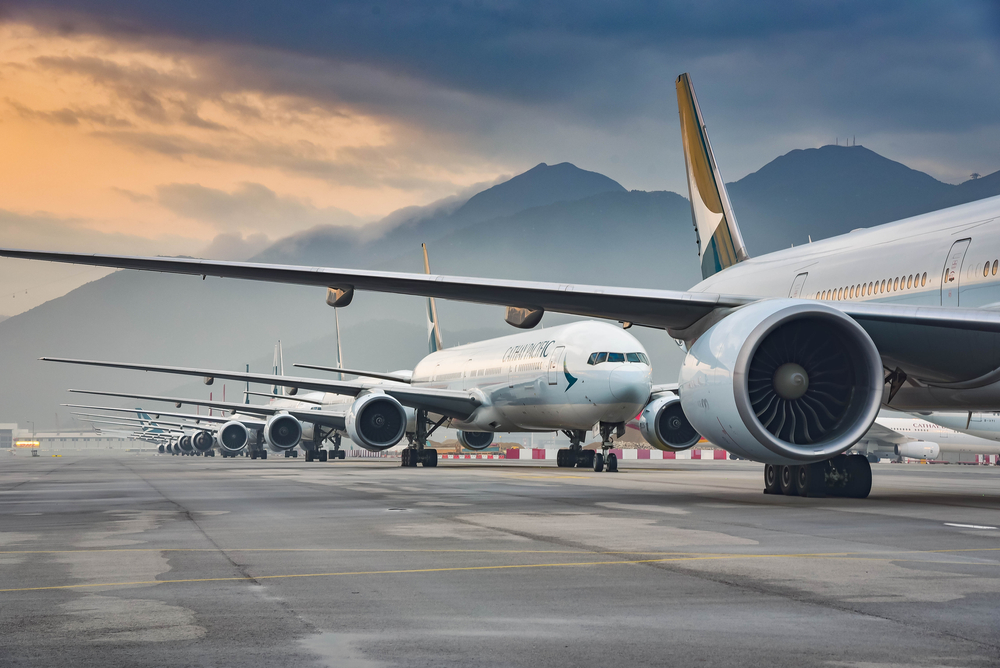Airlines changes we didn’t see coming before the pandemic
Contributors are not employed, compensated or governed by TDM, opinions and statements are from the contributor directly

There has been a lot of talk about the retirement of the iconic A380 with some major airlines already announced the aircraft retirement, either permanent or temporary.
With an only wide-body fleet and half made up by A380, it was only a matter of time for Emirates to restore services on their superjumbo. This week the airline announced that is sending their iconic A380 back to New York’s JFK Airport in June. The Dubai-based airline was slated to return the mega jumbo to New York in July. But they have now brought that forward a month. The A380 will be back at JFK for the first day of the northern summer.
From June 1, EK201/202, the daily Dubai-New York-Dubai services will resume using the A380. Presently, Emirates is using a Boeing 777-300ER on the route. The upgrade is now reflected on the Emirates website.
EK201 departs Dubai at 08:30 (local time) daily for the 14-hour nonstop hop across to New York. The flight lands at 14:25 on the same day. After nine and a half hours on the ground, EK202 leaves New York at 23:00 on the same day, heading out across the Atlantic and Europe to arrive in Dubai at 19:45 the following day.
Etihad’s Entire Boeing 777-300ER Fleet To Retire This Year

Abu Dhabi-based Etihad is amid its most ambitious transformation to date. A key focus for the airline is on fleet simplification, which has already seen the exit of the A330 and A380 from its fleet. Speaking at the World Aviation Festival, CEO Tony Douglas indicated that, by the end of this year, the 777-300ER will join the ranks of planes Etihad no longer flies.
Etihad is in the midst of a radical fleet shakeup. Having said goodbye to the last of its A330s earlier last year, and with its A380s parked indefinitely, the fleet was already much simplified compared to how it looked a couple of years ago. But Tony Douglas, the airline’s CEO, says it’s not over yet.
Goodbye 777-300ER!
Qatar Airways: The Airbus A380 Is A Thing of The Past

It’s only been seven years since Qatar Airways first took on the Airbus A380, but with the decimation of the business during the pandemic, the airline felt that the aircraft was a thing of history.
Significant changes in the aviation industry have forced the flag carrier of Qatar to ground all its superjumbos for the long term, and the type’s future remains in question. Qatar Airways holds 10 Airbus A380s within its fleet, but they all have been on the ground since last spring.
Soon after the rise of the pandemic, Qatar Airways quickly shared that it won’t fly the superjumbo again until at least late 2022. Then, at the turn of the year, the carrier confirmed that half of its A380 fleet won’t fly again.
Air France bids farewell to Airbus A380 fleet

French flag-carrier Air France has officially retired its last Airbus A380, the largest passenger aircraft type ever built, on Friday evening.
The airline performed a final farewell flight with F-HPJH, an A380 delivered to Air France just eight years ago in May 2012. Onboard the special flight were about 500 employees of the carrier that were working on the aircraft. It flew across France and back to Paris Charles de Gaulle Airport, spending about two hours and 20 minutes in the air.

Delta retired its 18 widebody Boeing 777s at the end of 2020 as a result of the COVID-19 pandemic. The retirement accelerated the airline’s strategy to simplify and modernize its fleet while continuing to operate newer, more cost-efficient aircraft.
Delta also announced plans to accelerate the retirement of the MD-88 and MD-90 fleets to June 2021. Since the onset of the COVID-19 situation, Delta has reacted quickly by parking aircraft and considering early aircraft retirements to reduce operational complexity and cost. To date, the airline has parked more than 650 mainline and regional aircraft to adjust capacity to match reduced customer demand.
Like many other big carriers, Delta will continue flying its fleet of long-haul next-generation Airbus A350-900s, which burn 21% less fuel per seat than the 777s they will replace.
In Conclusion
The newer Airbus widebody A350 and the Boeing 787 Dreamliner are much more suited planes to the modern climate and adheres to all major airline wider missions to cut costs and reduce emissions.
The A380 today has emissions that are 80% more than the A350. The A350 is also a strong-seater aircraft, especially with the -1000. The A350 was launched 2.5 years ago and 1000 are less than one year of age, These new generation and cost-efficient aircraft have been fitted with the state-of-the-art product and state-of-the-art cabin without sacrificing the number of passengers they transport which depending on the configuration, is not too far of the numbers of passengers on the A380, because the A380 can’t be full today.
Having a capacity of the A350 or the B787 is enough to capture the flows and airlines do that with the most modern aircraft.


Comments are closed.